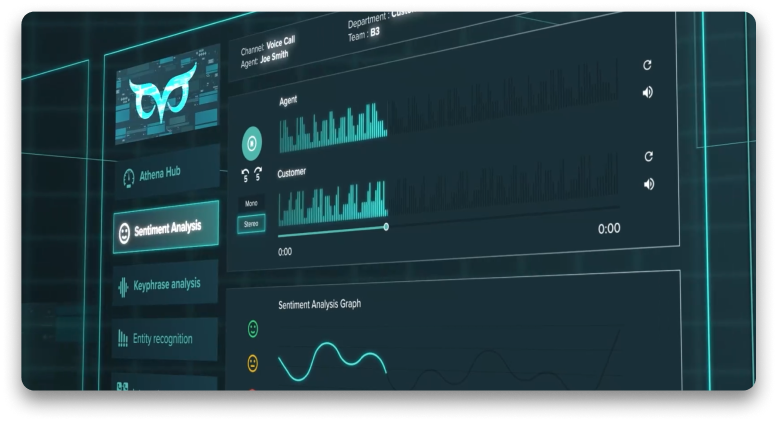Customer Journey Stages
In 2023, great Customer Experience (CX) is more important than ever. Customer journey mapping is one of the most important parts of Customer Experience; it can be defined as a visual breakdown of all the customer journey stages. Having a clear understanding of all your customer journey touchpoints or, in other words, of what it is like for your customers to engage with your business, is one of the most crucial conditions for any Customer Experience Management plan.
You might be trying to map your current customer journey or come up with a new plan to make your Customer Experience more effective, efficient and personalised.
Whatever the case may be, it’s essential to familiarise yourself with what your customer is thinking, feeling and doing at each stage of their journey.
What are the main customer journey stages?
Naturally, every customer journey is different, just like every business and its customer base are.
However, good customer journeys have something in common: they’re detailed, they’re comprehensive, and they account for the customer’s attitudes, intentions, feelings or goals towards a brand at each of the customer journey stages.
Customer journey mapping is then, essentially, an exercise in psychology: it’s all about understanding the customer and where they’re coming from, and this picture of the customer journey touchpoints should be as complete, detailed, and comprehensive as possible. It’s not enough to just put yourself in your customer’s shoes; you have to walk a mile in them.
While different businesses cater to different needs and different types of customers; there’s something all customers in the world share: they all go through different psychological phases before they decide to buy from you. Your customer journey stages must mirror those phases. These are:
1. Awareness
The first of all customer journey stages. Your customer has identified a problem, is now looking for a solution, and has stumbled upon your brand. This stage should include the reasons for their product search, the incentives for purchasing, and the moment they first hear about you.
2. Consideration
During the second of the customer journey touchpoints, your customers are contemplating what your brand has to offer and conducting research on both you and your competitors. This is when they visit your website, explore product descriptions and pricing, visit your About and Contact pages, read FAQ sections, and look for online reviews.
3. Decision
This is one of the most crucial customer journey stages. At this stage, your customer has accumulated sufficient information to make a purchase. This phase includes in-person buying experiences, online ordering pages, email confirmations, and FAQs regarding shipping and billing policies.
4. Retention
After making an initial purchase, your customer is assessing their overall experience. This one, the last of the customer journey touchpoints, is crucial for creating loyal returning customers and involves an assessment of your company’s customer support services, delivery and return options, and future discount or membership programs.
While these are common standard customer journey stages, you might have to include more depending on your business’ particularities. For example, you might want to consider how your customer’s experience with your product is on a day to day basis after their purchase, or what it is that they do upon first noticing an issue before they contact your customer service team.
The importance of customer journey mapping for CX
Having visibility over your customer journey stages and ordering them in a way that suits your customers’ needs is crucial for any business that aspires to improve their CX and become a more customer-centric company.
In a 2022 study, Hanover Research found that for 94% of businesses, customer journey mapping helped them develop new products and services to meet customer needs. Another 91% said that customer journey mapping and having a clear picture of their customer journey stages resulted in an increase in sales.
When done the right way, customer journey mapping can help you answer questions like these:
- “Am I meeting customer expectations with my website’s user interface? Why are users leaving the site so quickly?”
- “How frequently do customers contact customer support, and is the team equipped to address their issues promptly?”
- “What’s the customer’s interaction with my brand like before they decide to make a purchase, and how are they feeling during this phase?”
In turn, finding the right answers to those questions can help you to:
- Understand your customers better and manage your customer experience more efficiently
- Creating a logical order to your customer journey touchpoints
- Build a customer-centric company
- Train team members on CX standards and best practices
- Understand the differences in buyer personas
- Analyse the stumbling blocks in products, services, and customer journey touchpoints
- Make it easier to assess the ROI of future UX/CX investments.
Flow, our intelligent customer journey automation and mapping tool, is here to help you with that, along with the rest of features in the Connex One Customer Experience platform. Flow is much more than a customer journey mapping tool: it’s a cutting-edge CX tool for planning, deploying and automating entire customer journeys.
After laying out and arranging all your customer journey touchpoints, all the while visualising it in an intuitive interface, you’ll immediately be able to put it to work, automating all stages of your customer journey and making any needed changes or tweaks in a matter of seconds.
Our clients benefit from a dramatic improvement in Customer Experience, resulting in a tremendous boost in customer retention, satisfaction, and conversion rates. You can read this article for more information about how Flow can help you automate your Customer Experience processes or join us for a free bespoke discovery session!
If you enjoyed reading this, you might also be interested in…
Call Centre Software
Omnichannel Contact Centre
Improving customer loyalty and brand reputation through Omnichannel
4 customer service agent frustrations that omnichannel can solve



